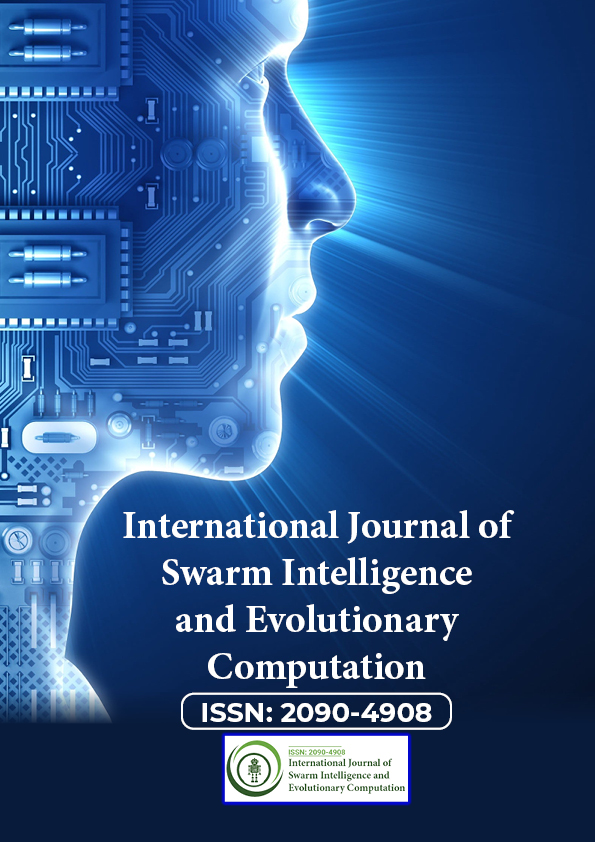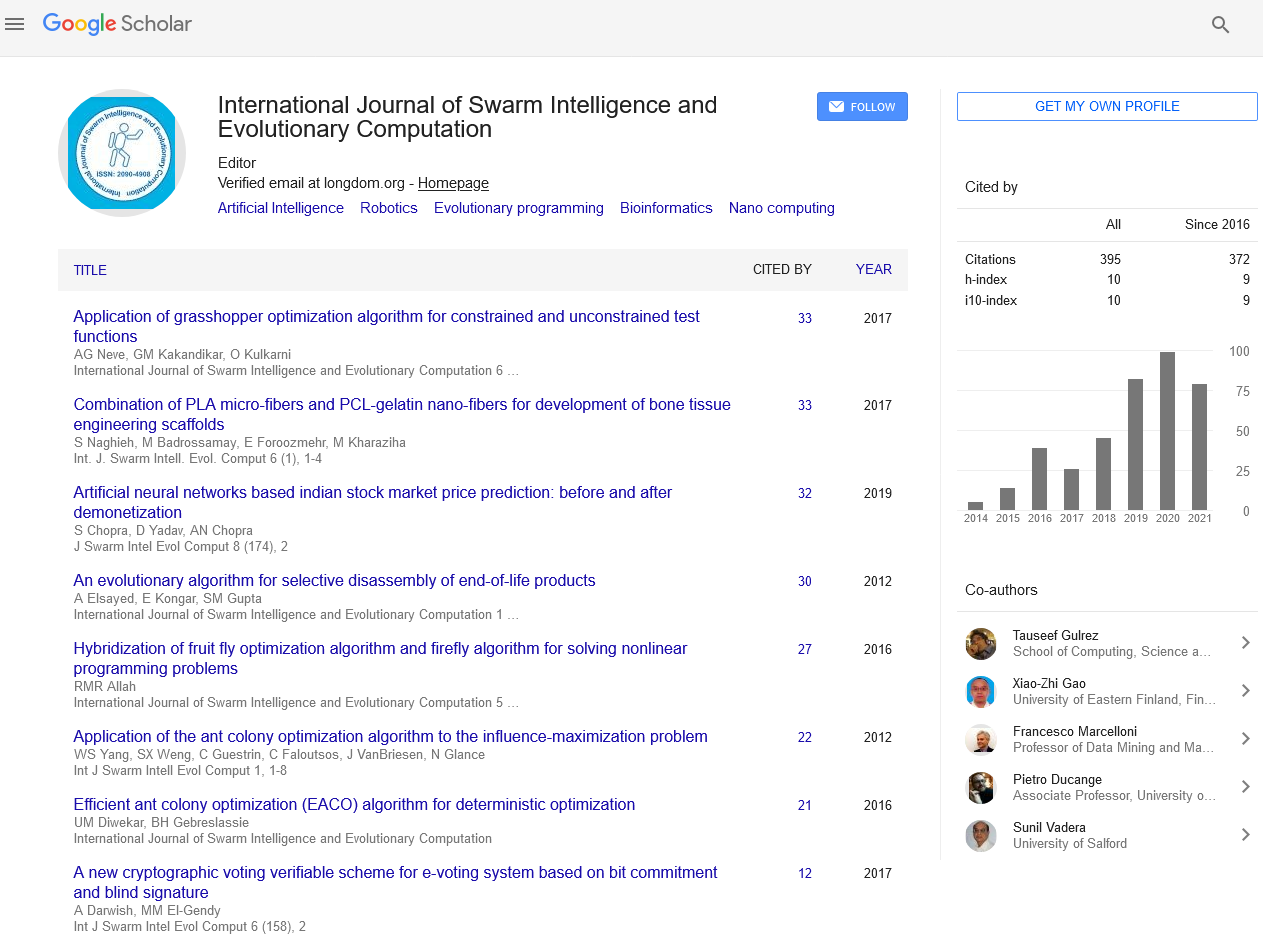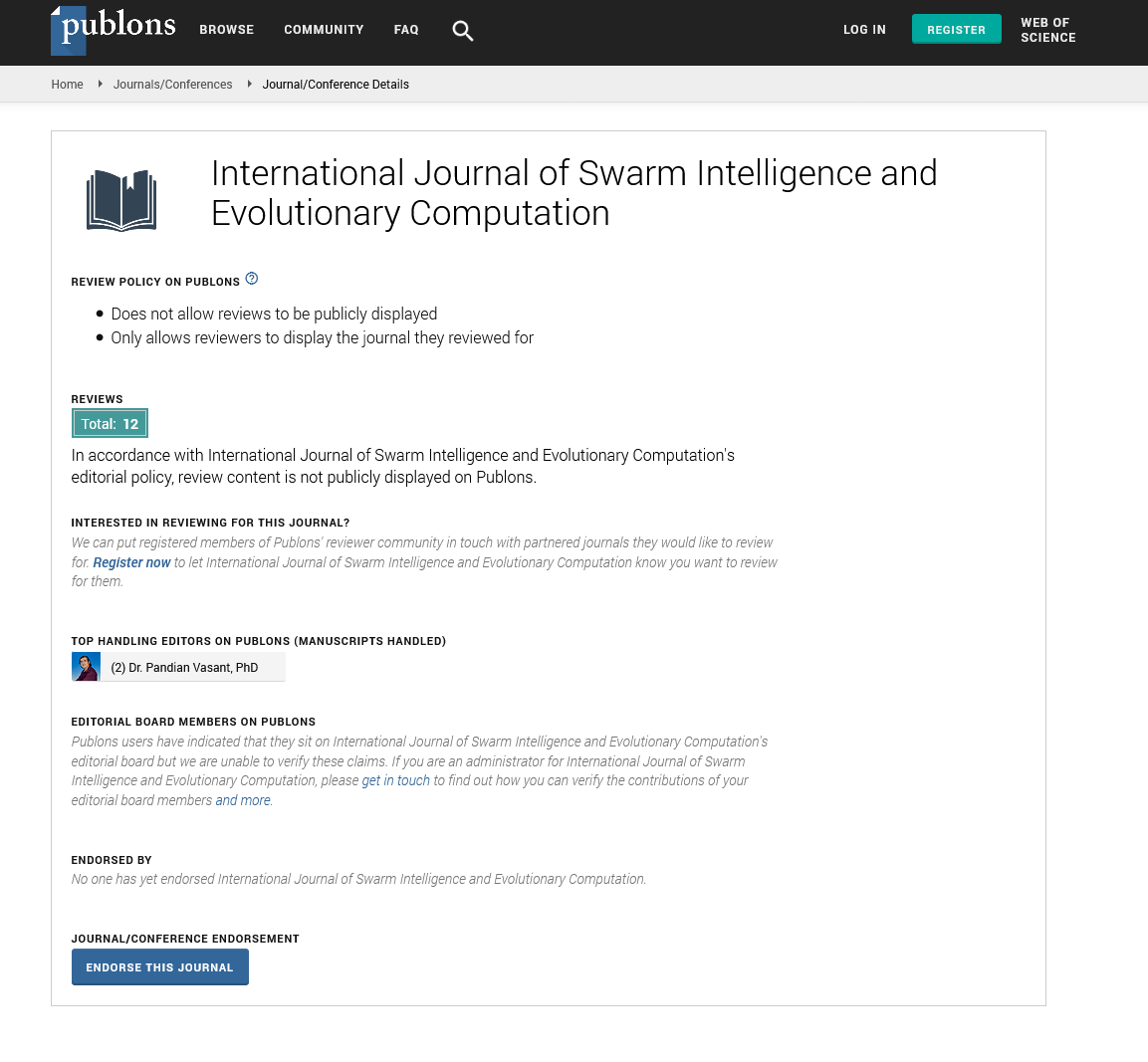Indexed In
- Genamics JournalSeek
- RefSeek
- Hamdard University
- EBSCO A-Z
- OCLC- WorldCat
- Publons
- Euro Pub
- Google Scholar
Useful Links
Share This Page
Journal Flyer

Open Access Journals
- Agri and Aquaculture
- Biochemistry
- Bioinformatics & Systems Biology
- Business & Management
- Chemistry
- Clinical Sciences
- Engineering
- Food & Nutrition
- General Science
- Genetics & Molecular Biology
- Immunology & Microbiology
- Medical Sciences
- Neuroscience & Psychology
- Nursing & Health Care
- Pharmaceutical Sciences
Opinion Article - (2022) Volume 11, Issue 8
Role of Computational Intelligence in Wireless Sensor Networks
Jeon Wang*Received: 18-Jul-2022, Manuscript No. SIEC-22-18058; Editor assigned: 21-Jul-2022, Pre QC No. SIEC-22-18058 (PQ); Reviewed: 09-Aug-2022, QC No. SIEC-22-18058; Revised: 18-Aug-2022, Manuscript No. SIEC-22-18058 (R); Published: 30-Aug-2022, DOI: 10.35248/2090-4908.22.11.270
Description
Computing Intelligence (CI) is the theory, design, use, and development of computational paradigms that are physiologically and linguistically motivated. The three primary foundations of CI have traditionally been Neural Networks, Fuzzy Systems, and Evolutionary Computation. However, several nature-inspired computing models have emerged over time. Thus, CI is a developing area that now includes computing paradigms such as ambient intelligence, artificial life, cultural learning, artificial endocrine networks, social reasoning, and artificial hormone networks in addition to the three major parts. CI is crucial in the development of successful intelligent systems, such as games and cognitive developmental systems. Deep Learning research, particularly deep convolutional neural networks, has exploded in the last few years. Deep learning is becoming the primary method for artificial intelligence. In reality, CI is at the heart of some of the most effective AI systems.
Paradigms of computational intelligence
In recent years, it has been successfully employed to handle a variety of difficulties including as optimal deployment, data aggregation and fusion, energy conscious routing, task scheduling, security, and localization.
In complex and dynamic systems such as Wireless Sensor Networks (WSNs), CI provides adaptive mechanisms that demonstrate intelligent behavior. CI increases flexibility, autonomy, and robustness in the face of topological changes, communication failures, and scenario changes. However, WSN developers can apply future CI methods to tackle Wireless Sensor Network problems. Some of the WSN issues and their solutions utilizing CI paradigms are covered in the session.
Sensor nodes are typically organized into clusters, with one node serving as the cluster leader. All nodes provide sensor data to the cluster lead, which routes it to a specialized node known as the sink node (base station) via multi-hop wireless communication. However, the sensor network is frequently tiny, consisting of a single cluster with a single base station. Other possibilities include several base stations or mobile nodes. Technical issues in network discovery, network control and routing, collaborative information processing, querying, and tasking are posed by resource limits and dynamic topology. To construct intelligent machines, CI incorporates components of learning, adaptation, evolution, and fuzzy logic. CI includes techniques that leverage swarm intelligence, artificial immune systems, and hybrids of two or more of the above, in addition to paradigms such as neuro-computing, reinforcement learning, evolutionary computing, and fuzzy computing.
Conclusion
Wireless sensor networks (WSNs) are networks of distributed autonomous devices that work together to sense or monitor physical or environmental factors. WSNs encounter numerous obstacles, the majority of which are caused by communication failures, storage and processing limits, and a limited power supply. In recent years, computational intelligence (CI) paradigms have been successfully applied to handle a variety of difficulties such as data aggregation and fusion, energy aware routing, task scheduling, security, optimal deployment, and localization. In complex and dynamic systems such as WSNs, CI provides adaptive mechanisms that demonstrate intelligent behavior. CI increases flexibility, autonomy, and robustness in the face of topological changes, communication failures, and scenario changes. In addition, there will be a review of the benefits and drawbacks of CI algorithms over standard WSN solutions. Furthermore, a general evaluation of CI algorithms is offered as a guide for using CI algorithms for WSNs.
Citation: Wang J (2022) Role of Computational Intelligence in Wireless Sensor Networks. Int J Swarm Evol Comput. 11:270.
Copyright: © 2022 Wang J. This is an open-access article distributed under the terms of the Creative Commons Attribution License, which permits unrestricted use, distribution, and reproduction in any medium, provided the original author and source are credited.


